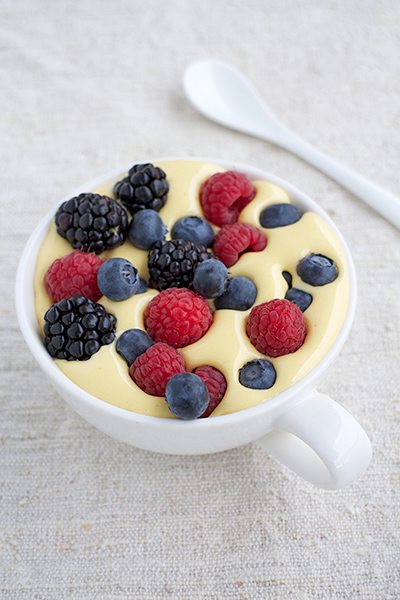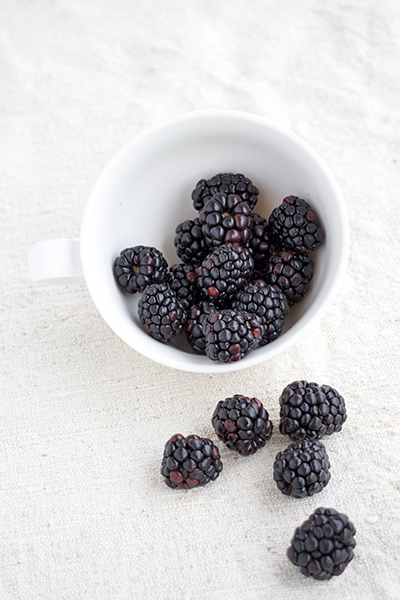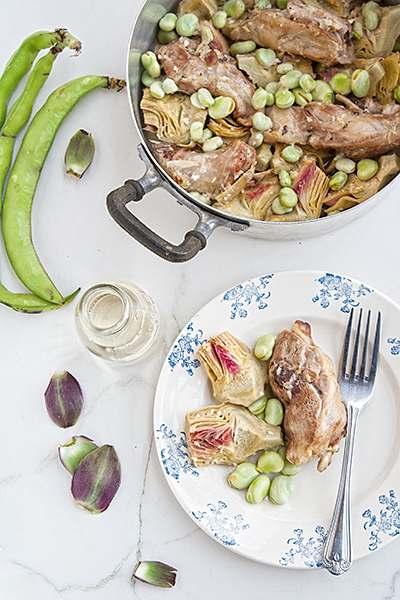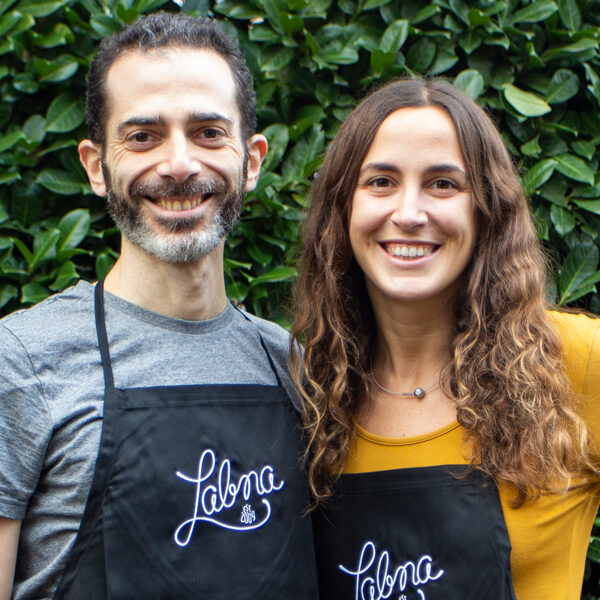Zabaione
Sono sicura che tra i lettori di Labna tutti conoscano lo zabaione, uno dei più semplici, classici e apprezzati dolci della tradizione italiana: preparato sbattendo a lungo tuorli d’uovo e zucchero, ingredienti umili ma nutrienti, e arricchito con vino liquoroso, è il tipico comfort food facile da cucinare e adatto a tutte le stagioni.
Oggi lo raccontiamo, anche in inglese (English speaker? See the English version!), ai lettori dell’Italian Table Talk, il progetto dedicato alla cucina italiana che condivido con Giulia, Valeria ed Emiko, e che questo mese ha come tema la merenda.
Ho scelto di raccontare ai nostri lettori di lingua inglese lo zabaione non solo perchè è una delle merende tipiche della mia infanzia, ma anche perchè ha una storia misteriosa e interessante.
Sull’origine del nome dello zabaione, infatti, ci sono numerosi aneddoti.
Secondo alcuni lo zabaione prese il nome dal capitano di ventura Giovanni Baglioni, che nel 1500, si accampò nei pressi di Reggio Emilia e mandò i suoi soldati in cerca di cibo: questi tornarono con quello che trovarono nei campi e nei vicini terreni, cioè uova, vino e zucchero.
Ne fecero un miscuglio che poi gustarono come rancio e ne rimasero talmente entusiasti che la ricetta presto si diffuse e la crema prese il nome del capitano Giovanni Baglioni, chiamato popolarmente “Zvàn Bajòun”.
Un’altra versione invece racconta che lo zabaione prese il nome del monaco francescano Pasquale de Baylon (patrono dei pasticceri torinesi), che lo inventò a Torino nel XVI secolo; approdato in città per il suo apostolato presso la Parrocchia di San Tommaso, consigliava alle sue penitenti (specialmente a quelle che si lamentavano della poca vivacità del consorte) una sua ricetta ricostituente che avrebbe dato loro e ai loro mariti vigore ed energia. Quando il monaco divenne santo, il dolce diventò la crema di San Baylon, da cui il nome zabaione.
E ancora, c’è una terza versione della storia, secondo la quale sarebbe stata Venezia a dare i natali alla crema: nel XVII secolo si preparava infatti una vellutata bevanda, forse proveniente dalla Dalmazia, chiamata “zabaja”, aromatizzata con del vino dolce di Cipro.
È tuttavia probabile che queste tradizioni siano almeno in parte romanzate e che una crema simile allo zabaione fosse diffusa più o meno ovunque, considerata la semplicità della ricetta – che ora vi spiego.

Zabaione
Ingredienti
- 4 tuorli d'uovo
- 80 g di zucchero
- 50 ml di vino dolce es. marsala, porto, moscato
Istruzioni
- Prendete 4 uova e tenete solo i tuorli, conservando gli albumi per altre preparazione (es. la meringa); sbattete i tuorli con lo zucchero con le fruste elettriche fino ad ottenere una crema liscia, spumosa e chiara.
- Unite il vino a filo nella ciotola delle uova, sempre mescolando con le fruste elettriche; intanto, scaldate dell'acqua in una pentola o una padella grande abbastanza da contenere la ciotola delle uova.
- Immergete la ciotola delle uova a bagnomaria: il fuoco deve essere molto basso e l’acqua non deve bollire, altrimenti si rischia di strapazzare le uova; continuate a mescolare la crema con la frusta - stavolta a mano - per un quarto d'ora, finchè la crema si addensa bene.
- Servite la crema tiepida, appena fatta, o lasciatela raffreddare per una decina di minuti, accompagnandola con frutti di bosco o biscottini (le lingue di gatto sono i più adatti e tradizionali).
- La crema può essere anche usata per riempire crostatine o per farcire le tradizionali bignole piemontesi.
Se come me siete anche voi rimasti un po’ bambini e siete sempre a caccia di idee per la merenda, ricordatevi di passare a scoprire le altre ricette dell’Italian Table Talk di oggi: la zuppa inglese di Giulia, i biscotti tipo Grancereale di Valeria e il pane al pomodoro di Emiko.
The theme of our Italian Table Talk for October (as always shared with my friends Giulia, Valeria and Emiko) is merenda.
In Italy, many children and adults alike have a mid-afternoon snack called merenda, usually around four: such a meal is generally consumed after school or in the middle of the afternoon, and features different types of foods. In the past, merende were similar to breakfasts, and might have consisted in a glass of milk accompained by leftover bread and homemade jam; today, other foods are more commonly eaten, such as yogurt, ice cream, store-bought cookies and sweets.
One of my fav merende as a child would be zabaione, a custardy treat made of egg yolks, sugar, and sweet dessert wine, usually served warm. Zabaione is the perfect merenda, because it can be whipped up in minutes with ingredients that are easily found in every household, and – like another italian classic, tiramisu – is guaranteed to pick you up.
Zabaione is not only a very delish custard, but also a recipe with a mysterious history. The origin of the name zabaione, in fact, is pretty obscure and there’s a number of anecdotes about
it.
According to some, zabaione was named after the captain Giovanni Baglioni who, in the 1500s,
camped near Reggio Emilia and sent his soldiers in search of food: they returned with what they
found in the fields and in the neighboring land, eggs, wine and sugar.
With these ingredients at hand the soldiers made a simple cream for lunch, and they were so
excited about how good it turned out that they named it after their captain Giovanni Baglioni,
whose name in Italian dialect sounded like “Zvan Bajòun”.
Another version of the story says that zabaione was named after a Franciscan monch, Pasquale de
Baylon, later made patron saint of pastry chefs, who invented our custard in Turin in the
sixteenth century; he arrived in town for his apostolate at the Parish of St. Thomas, and advised his penitents (especially women who complained about their husbands being a little lazy in bed) a tonic, invigorating recipe that would give them force and energy. When the monch became saint, the sweet cream the invented was called San Baylon, hence the name zabaione.
And yet, there is a third version of the story, according to which the city of Venice was to give birth to the cream: in the seventeenth century a velvety drink, perhaps originally from Dalmatia, called “zabaja”, flavored with sweet wine of Cyprus, became popular in the city.
It is likely that these traditions are at least partially fictionalized, and that a custard similar to zabaione was spread more or less everywhere in Italy in the past, given the simplicity of the recipe.
Whatever the story, zabaione remains one of the best and easiest Italian desserts: if you’ve never tasted it, it’s time to give it a try.

Zabaione
Ingredienti
- 4 egg yolks save whites for meringue!
- 80 g sugar
- 50 ml sweet dessert wine
Istruzioni
- Place egg yolks and sugar in a large, round-bottomed stainless steel bowl and wisk for about 10 minutes, until the mixture triples in volume, froths up and becomes pale.
- Pour in the wine in a slow, steady flow.
- In the meantime, half-fill a pot with water, bring the water to a simmer and reduce the heat to low. Set the bowl containing the custard over the water in a bain-marie and make sure that the water does never boil, otherwise the custard will curdle.
- Whisk the custard gently by hand while heating it; when it reaches the desired consistency, take the bowl of custard out of the pot.
- Slightly thickened, the custard can be used as a sauce, while longer cooking will thicken the custard further, giving it the texture of a mousse.
- Serve the custard while still warm or set it aside at room temperature for 15 minutes if you want it cold.
- Ladle the zabaglione into individual glasses. Serve with berries or cookies such as traditional langues de chat.
- Zabaione can be used instead of pastry cream to fill pies, tarts and éclairs.
Now if you love your merenda just as much as I do, you must check out all the delish treats that my friends have prepared for their merende: Giulia’s zuppa inglese, Valeria’s grancereale cookies and Emiko’s savoury pane al pomodoro. My mouth waters at the very thought!








I’d never heard that first story before about the origin of zabaione! This is one of my favourite treats, I love it’s simplicity. Marco’s nonna used to make this for him as a child for merenda and it’s still one of the only sweets he loves – she’d put coffee into it instead of wine (one vice traded for another!) and he’d gulp it all down before going to soccer practice!
Wow, my merenda really does feel sad now compared to this! But did you have it with the booze as a child as well? Not that I am against that, just curious. I think I had my first real deal zabaione quite late actually, probably only when I moved to Piemonte, and oh man, I love it so much… I would put it on everything – panettone for starters, but also in a layered cake. In fact, my wedding cake had zabaione cream in it…:)
I used to have zabaione as afternoon snack too. My mother used to prepare it to me although wine (White wine, red wine or marsala) was added later on.
Don’t ask me why my mother was making a five year-old girl eat zabaione and wine. Just ask me how this snack worked on my physical development :) I was the taller in primary school and still I am :)
I love you mom :)
ps: now I am not giving my kids zabaione mainly because I don’t trust store-bought eggs and wouldn’t ever have my kids eating raw eggs from store. Luckily my mom has bought some chickens and so I can have fresh eggs…
Mi piace moltissimo lo zabaione anche senza l’aggiunta dei mirtilli e altri frutti di bosco!!! W LO ZABAIONE!!! :) <3